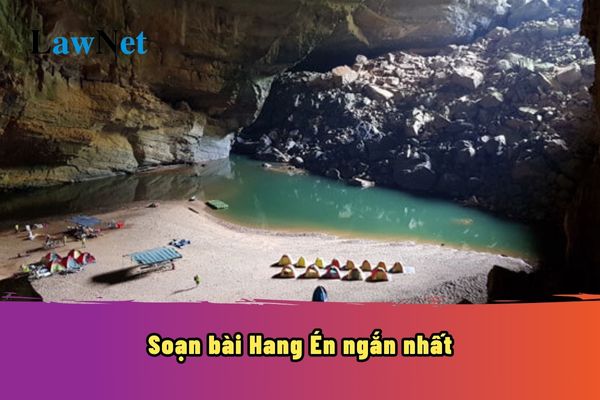What are the guidelines for preparing the shortest lesson "Hang Én"? What is the age range of lower secondary school students in Vietnam?
What are the guidelines for preparing the shortest lesson "Hang Én"?
"Hang Én" is a literary work rich in descriptive quality, harmoniously combining scientific elements with emotions. The author successfully paints a lively picture of one of Vietnam’s natural wonders, while conveying a message of love for nature and awareness of environmental protection.
6th-grade students can refer to the following sample shortest lesson "Hang Én":
|
The Shortest Lesson "Hang Én" * Main Content: |
*Note: Information is for reference only./.

What are the guidelines for preparing the shortest lesson "Hang Én"? (Image from the Internet)
What is the age range of lower secondary school students in Vietnam?
Under Article 28 of the Education Law 2019, regulations on the age of primary, lower secondary, and upper secondary school students are as follows:
1. Educational levels and age groups of general education are regulated as follows:
- Primary education lasts for 05 school years, from the first to the fifth grade. The entry age for the first grade is 06;
- Lower secondary education lasts for 04 school years, from the sixth to the ninth grade. Students must complete the primary educational programme before entering the sixth grade. The entry age for the sixth grade is 11;
- Upper secondary education lasts for 03 school years, from the tenth to the twelfth grade. Students must complete the lower secondary educational programme before entering the tenth grade. The entry age for the tenth grade is 15;
2. Cases where schooling could be commenced at younger ages or at higher ages prescribed in clause 1 of this Article are as follows:
- Commencing schooling at younger ages for students with early intellectual development;
- Commencing schooling at older ages for students repeating classes, students living in areas with exceptional socio-economic difficulties, students belonging to ethnic minorities, disabled and handicapped students, students with physical or intellectual disadvantages, orphan students, students of poor households, students returning from overseas and other cases as prescribed by law.
3. General education shall be divided into 2 phases: basic education and career-orientated education. Basic education includes primary education and lower secondary education; career-oriented education is upper secondary education. Students of institutions of vocational education shall learn the upper secondary education knowledge.
Thus, according to the above regulations, lower secondary education lasts 4 years, from 6th grade to the end of ninth grade, ranging from 11 to 15 years of age.
What are the objectives of lower secondary education in Vietnam?
Specifically, according to Article 29 of the Education Law 2019, the objectives of lower secondary school education are:
- The objectives of general education are to help learners develop comprehensively by acquiring morals, knowledge, physical health, aesthetic values and other basic skills, develop personal abilities, flexibility and creativeness, with a view to forming the socialist Vietnamese personality and the civic duty, to preparing them for further studies of higher education, vocational education or entering the workforce, participating in the building and defending of the Fatherland.
- Lower secondary education is directed towards students' consolidation and development of the outcomes of primary education, provision of general and basic knowledge along with introductory understanding on techniques and career orientation to enter upper secondary education or vocational education.

